
A few years ago we wrote a bibliometric paper describing a new way to rank journals, and I still think it is one of the better ways to rank them based on a composite index of relative citation-based metrics . I apologize for taking so long to do the analysis this year, but it took Google Scholar a while to post their 2017 data.
So, here are the 2017 ranks for (i) 88 ecology, conservation and multidisciplinary journals, and a subset of (ii) 55 ‘ecology’ journals, (iii) 24 ‘conservation’ journals. Also this year, I’ve included two new categories — (iv) 38 ‘sustainability’ journals (with general and energy-focussed journals included), and 19 ‘marine & freshwater’ journals for you watery types.
See also the previous years’ rankings (2016, 2015, 2014, 2013, 2012, 2011, 2010, 2009, 2008).
(i) ecology, conservation and multidisciplinary
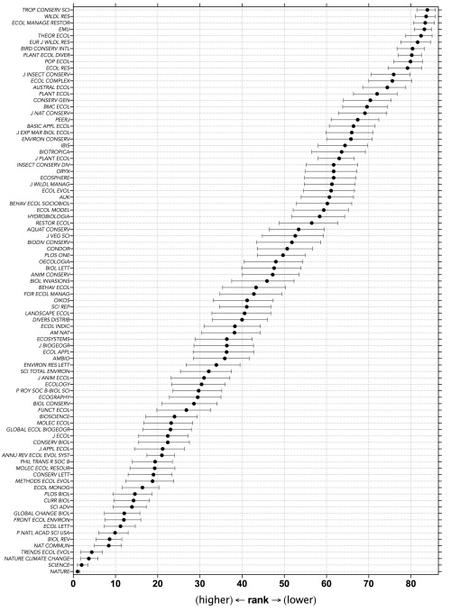
Here’s a more focussed list of the top-20 journals from above:
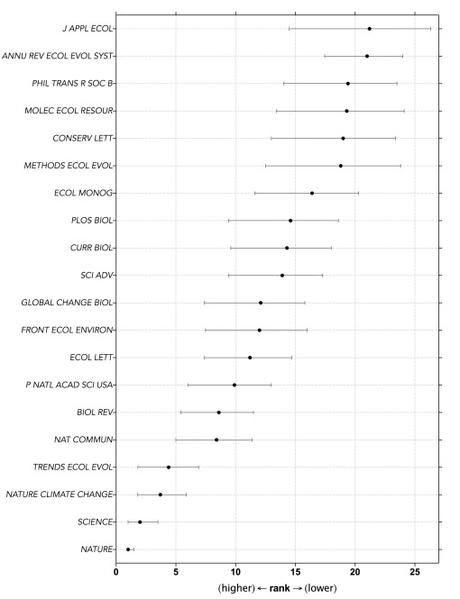
Not much different to last year’s rankings except the PLoS Biology has lost a lot of ground.
(ii) ecology journals
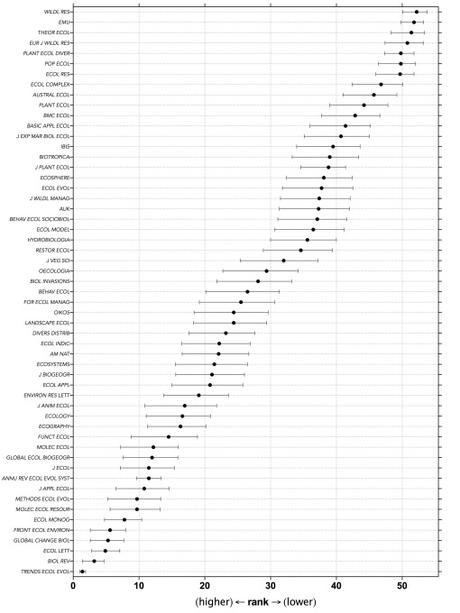
Here’s a closer look at the top-20 from that last list:
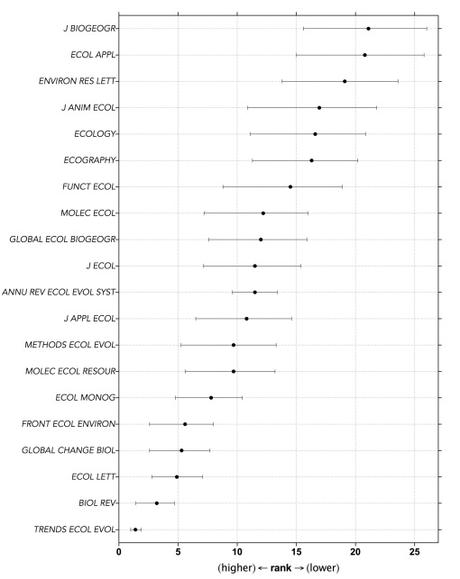
(iii) conservation journals
Here’s the most interesting list for CB.com readers:
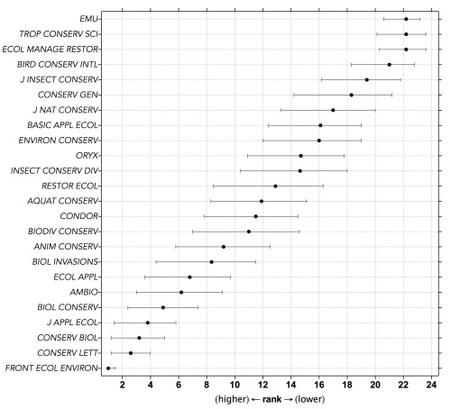
This hasn’t changed much from last year, except that Conservation Biology has nudged out Journal of Applied Ecology for third place.
(iv) sustainability journals
The ‘sustainability’ journals (including some general-category ones too):
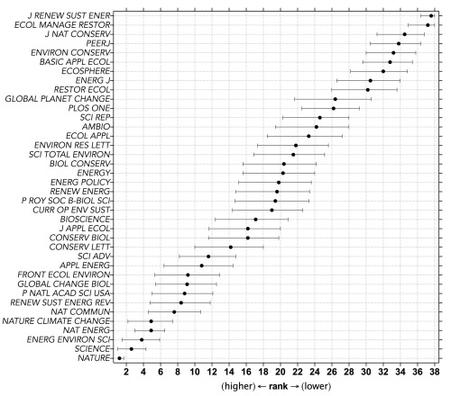
(v) marine and freshwater journals
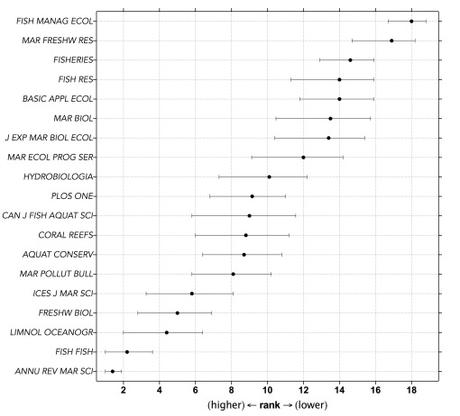
—
CJA Bradshaw

